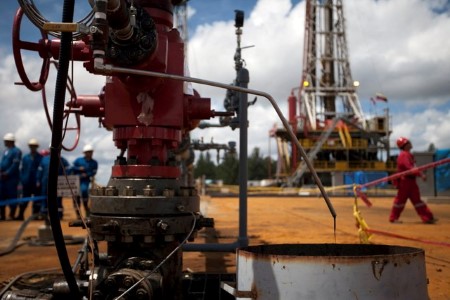




Quarterly Economic Growth Release: More BSP cuts to come
 DOWNLOAD
DOWNLOAD

Monthly Economic Update: Fed catches up
 DOWNLOAD
DOWNLOAD

Inflation Update: Steady and mellow
 DOWNLOAD
DOWNLOAD


Oil prices up 3% to 4-month high on US crude stock drop, Russian refinery attacks

NEW YORK, March 13 – Oil prices rose about 3% to a four-month high on Wednesday on a surprise withdrawal in US crude inventories, a bigger-than-expected drop in US gasoline stocks, and potential supply disruptions after Ukrainian attacks on Russian refineries.
Brent futures rose USD 2.11, or 2.6%, to settle at USD 84.03 a barrel, while US West Texas Intermediate (WTI) crude rose USD 2.16, or 2.8%, to settle at USD 79.72.
That was the highest close for Brent since Nov. 6.
The US Energy Information Administration (EIA) said energy firms pulled a surprise 1.5 million barrels of crude from stockpiles during the week ended March 8.
That compares with the 1.3 million barrel build analysts forecast in a Reuters poll and the 5.5 million barrel withdrawal shown in data from the American Petroleum Institute (API), an industry group.
US gasoline futures, meanwhile, showed the biggest price increase across the energy complex, rising about 2.9% to their highest since September 2023 after EIA said energy firms pulled a much larger-than-expected 5.7 million barrels of gasoline from stockpiles last week.
That compares with the 1.9 million-barrel withdrawal from gasoline stocks that analysts forecast in a Reuters poll.
“Gasoline is driving us today. There is growing concerns about growing tightness with a combination of seasonal maintenance and other outages,” said Phil Flynn, an analyst at Price Futures Group.
That increase in gasoline prices boosted the gasoline-crack spreads, which measure refining profit margins, to their highest since August and September 2023, respectively.
In Russia, Ukraine struck oil refineries in a second day of heavy drone attacks, causing a fire at Rosneft’s biggest refinery in what Russian President Vladimir Putin said was an attempt to disrupt his country’s presidential election this week.
“As Russian refining capacity is damaged by Ukrainian drone strikes, this can result in Russia exporting less diesel fuel with a potential for Russia to start importing gasoline and that of course will affect prices around the world,” said Andrew Lipow, president of Lipow Oil Associates in Houston.
Putin told the West that Russia was technically ready for nuclear war and that if the US sent troops to Ukraine, it would be considered a significant escalation of the conflict. Putin, however, also said he saw no need for the use of nuclear weapons in Ukraine.
Oil and the wider financial markets also found support from sentiment that the latest data on US inflation will not derail interest rate cuts by midyear.
Lower rates can boost economic growth and support oil demand.
The Organization of the Petroleum Exporting Countries (OPEC), meanwhile, stuck to its forecast for oil demand growth of 2.25 million barrels per day (bpd) in 2024, higher than many other forecasts.
The International Energy Agency (IEA), which expects demand growth to be much lower, updated its forecasts on Thursday.
(Reporting by Scott DiSavino in New York, Robert Harvey and Alex Lawler in London; additional reporting by and Laila Kearney in New York, Georgina McCartney in Houston, Katya Golubkova in Tokyo, and Jeslyn Lerh in Singapore; Editing by Jason Neely, Andrea Ricci and Jonathan Oatis)
This article originally appeared on reuters.com





 By Reuters
By Reuters